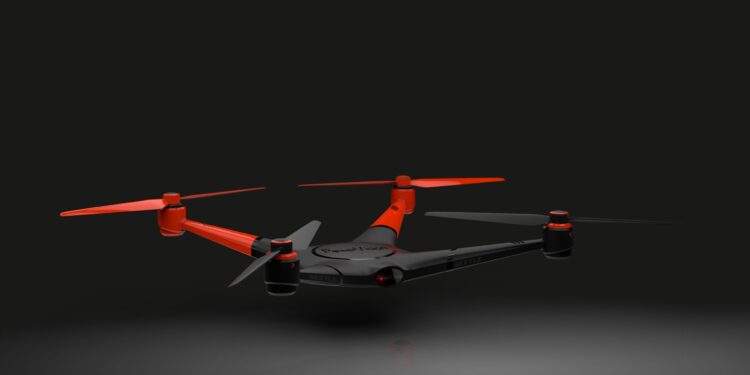Introduction
The world of photography and videography has undergone a remarkable transformation with the advent of camera drones. These small, unmanned aerial vehicles equipped with cameras have opened up new perspectives and possibilities for capturing stunning aerial imagery. In this article, we will explore the evolution of camera drones, their applications across various industries, and the future they hold in store.
The Evolution of Camera Drones
Camera drones, also known as quadcopters or unmanned aerial vehicles (UAVs), have come a long way since their inception. Initially developed for military purposes, they quickly found applications in civilian sectors, particularly in photography and videography. Here’s a brief overview of their evolution:
1. Early Beginnings: The concept of a camera drone for civilian use emerged in the early 2000s, primarily driven by hobbyists and enthusiasts. These early drones were often DIY projects, cobbled together from off-the-shelf components.
2. Advancements in Technology: As technology advanced, camera drones became more accessible and user-friendly. Key developments included improvements in battery life, GPS navigation, stabilization systems, and remote control interfaces.
3. Entry of Major Manufacturers: Recognizing the growing demand, major manufacturers such as DJI, Parrot, and Yuneec entered the market with consumer-friendly drones equipped with high-quality cameras. DJI, in particular, has become a dominant player in the industry.
4. Professional-Grade Drones: Alongside consumer drones, manufacturers also developed professional-grade models capable of carrying advanced cameras and recording equipment. These drones cater to filmmakers, photographers, and industries such as agriculture, surveying, and search and rescue.
Applications of Camera Drones
Camera drones have expanded beyond being mere gadgets for hobbyists. They have found a multitude of applications across various industries, revolutionizing the way we capture and utilize aerial imagery:
1. Aerial Photography and Videography: The most obvious application of camera drones is in capturing stunning aerial photographs and videos. Drones equipped with high-resolution cameras and stabilizers offer unique angles and perspectives, making them indispensable tools for photographers, filmmakers, and content creators.
2. Real Estate: In the real estate industry, drones are used to capture breathtaking aerial views of properties. This allows potential buyers to get a better sense of the property and its surroundings, enhancing the sales process.
3. Agriculture: Farmers utilize drones for precision agriculture. Equipped with multispectral cameras, these drones can monitor crop health, detect diseases, and optimize the use of fertilizers and pesticides, leading to increased crop yields and reduced environmental impact.
4. Construction and Surveying: In construction and civil engineering, drones provide accurate aerial surveys and 3D modeling. They aid in site planning, monitoring construction progress, and assessing structural integrity, thereby saving time and resources.
5. Environmental Conservation: Researchers and conservationists use drones to monitor wildlife, track deforestation, and survey remote and inaccessible areas. Drones have also been instrumental in anti-poaching efforts and protecting endangered species.
6. Emergency Response: Drones play a crucial role in emergency response situations. They can quickly assess disaster-stricken areas, locate missing persons, and deliver medical supplies to remote locations.
7. Infrastructure Inspection: Utility companies employ drones to inspect power lines, pipelines, and other critical infrastructure. This not only ensures safety but also reduces operational downtime.
Challenges and Considerations
While camera drones offer numerous benefits and opportunities, they also come with challenges and considerations:
1. Regulation and Privacy: The use of drones is subject to regulations and privacy concerns. Many countries have strict laws governing where and how drones can be operated. Ensuring compliance with these regulations is essential.
2. Safety: The safety of people and property must always be a top priority when operating drones. Drones can pose risks if not operated responsibly, and accidents have occurred when operators are not cautious.
3. Environmental Impact: The environmental impact of drones, including noise pollution and wildlife disturbance, is a concern in sensitive ecosystems. Responsible drone operation and adherence to environmental guidelines are essential.
4. Cost: High-quality camera drones can be expensive, particularly for professional-grade models. Buyers need to consider their specific needs and budget when choosing a drone.
The Future of Camera Drones
The future of camera drones is full of promise and potential innovations:
1. Enhanced Technology: Advances in drone technology are expected to continue, with improvements in flight time, range, obstacle avoidance, and AI-driven capabilities.
2. Autonomous Flight: Autonomous flight modes, including automated path planning and subject tracking, are likely to become more sophisticated, simplifying drone operation and expanding their use.
3. Expanding Commercial Applications: The commercial use of drones is expected to grow, with applications in industries like delivery services, urban planning, and entertainment.
4. Regulation and Safety: Governments and aviation authorities will continue to refine regulations to ensure safe drone operation while striking a balance between innovation and public safety.
Conclusion
Camera drones have revolutionized the world of photography and videography, offering breathtaking aerial perspectives and unlocking new possibilities in various industries. Their impact spans from art and entertainment to agriculture, conservation, and emergency response. However, the responsible use of drones, adherence to regulations, and consideration of privacy and environmental concerns are essential to harness their full potential while mitigating risks. As technology continues to evolve, camera drones will undoubtedly play an increasingly significant role in our daily lives and various professional fields, offering us a fresh lens through which to view the world.






